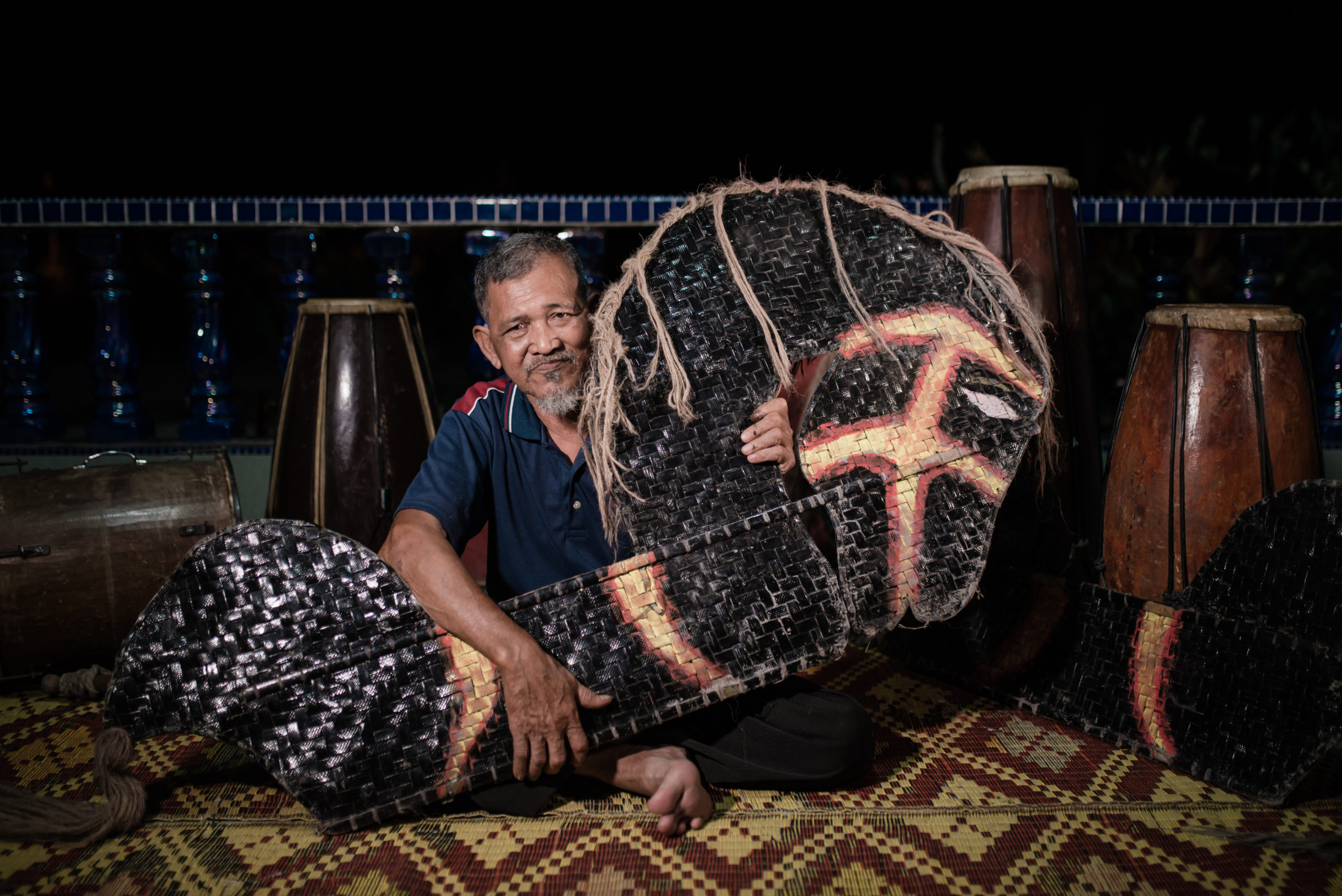
Wak Din shares his experiences and opinions on the traditional practice of Kuda Kepang.
By CHIN JIAN WEI
Hairuddin Zakaria, better known as Wak Din, is a long-time practitioner of Kuda Kepang. Now in his late 60s, he has been practising the art form since 1969, well over four decades ago. He says, “At first, I had a simple interest in Kuda Kepang, and I liked watching it. I would go to all the performances. I was interested in how it works and started learning it. I asked the elders when I had questions. And eventually, inspiration came. I started as a dancer and eventually became a lead dancer.”
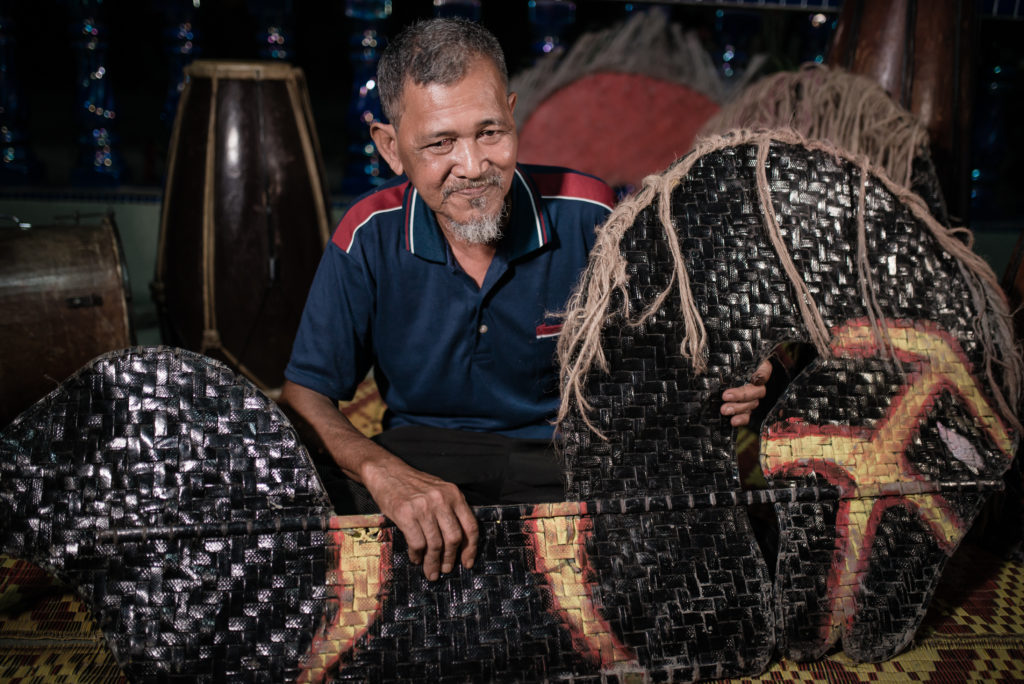
Kuda Kepang is a traditional Javanese dance that was brought over to Malaysia. It is practised in Johor by communities with Javanese heritage, particularly in regions like Batu Pahat and Muar. The performance involves nine male dancers seated on a ‘horse’ crafted from pleated rattan. As the dance unfolds, the dancers enter a trance-like state, embodying subliminal energies called ‘isim.’
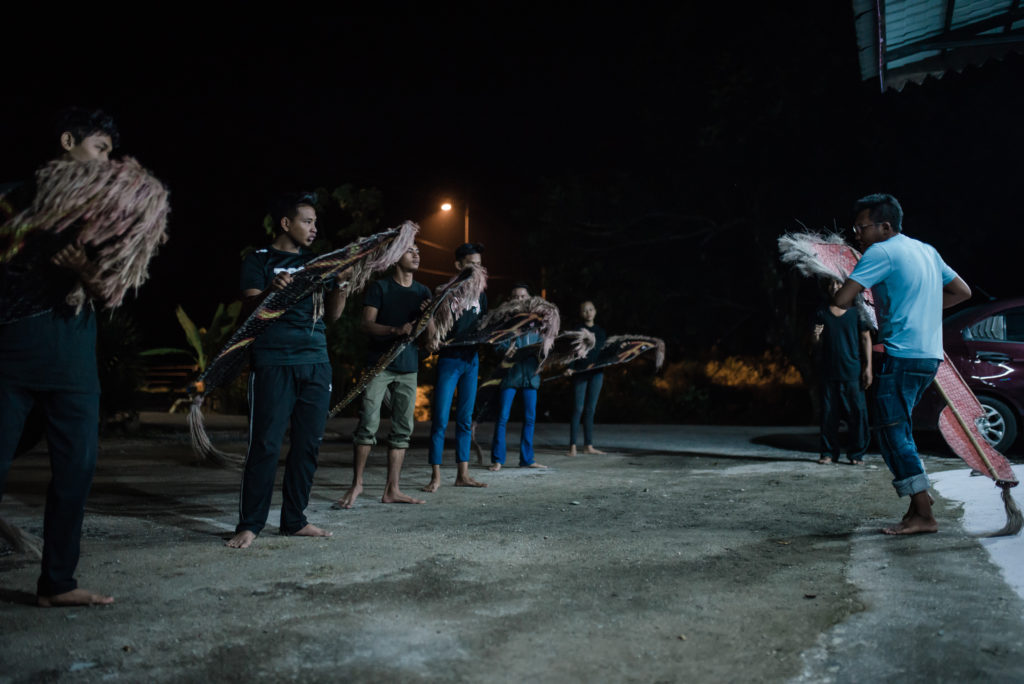
“At first, the dance was made to entertain,” Wak says. “After that, with the spread of Islam, it took on religious aspects. The dance now is different compared to back then.” This dance commemorates the story of Wali Songo (Nine Saints) of Java, who played a pivotal role in spreading the Islamic faith in the interior regions of Java. According to the legend, the Wali Songo rode on horseback, and Kuda Kepang uses dramatic storytelling to depict the battles fought and won for the cause of Islam.
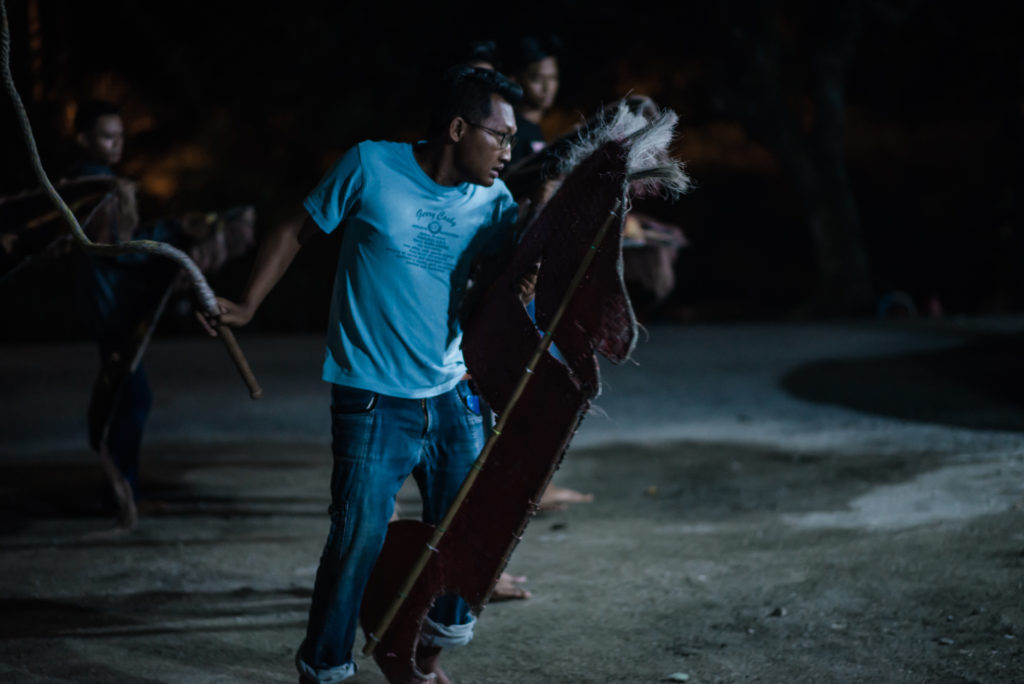
According to Wak, there are 3 Kuda Kepang troupes in his area, Batu Pahat, Johor. He says, “There are differences in the dance and in the rhythm of the gendang drums. Each of them practices it differently, with different aims. Wak’s troupe, Kumpulan Kuda Kepang RHF (Red Horse Family) practises a free style of performing. Wak says, “The styles of practising Kuda Kepang will change with the passage of time. For example, in the past Kuda Kepang could not be performed on a stage, but now, it can.”
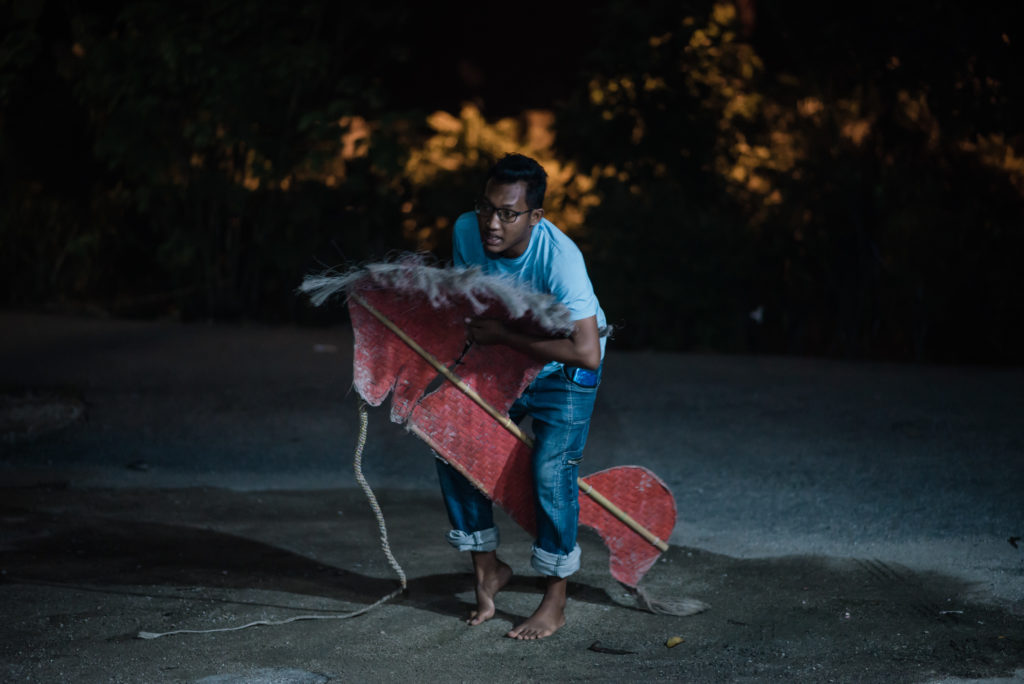
In 2013, Wak Din founded Kumpulan Kuda Kepang RHF (Red Horse Family), Parit Raja, comprising young performers under the tutelage of experienced elders. They never fail to enthrall audiences and their local performances always manage to gather packed seats. “There’s no skill requirement for youngsters to join, what’s most important is that they’re interested. I hope that the culture of Kuda Kepang does not disappear with time, and is spread to the younger generation. It also helps stop them from wandering around and out of trouble.”
Hairuddin Zakaria is a recipient of CENDANA’s Adiguru grant, conducted in partnership with PUSAKA, for the art of Kuda Kepang.
To read more stories, click on the links below:
